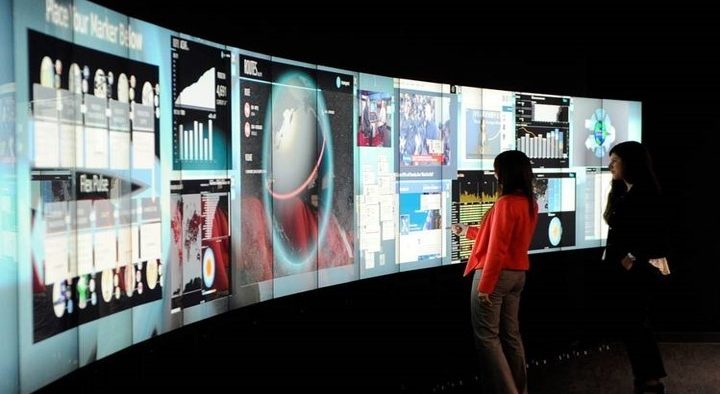Coping with current challenges in supply chain, transport and logistics
Share

Multiple shifts in the world of supply chain, transport and logistics are posing challenges to the leaders in the private and public sector.
The following five areas are worth a closer look: adapting to shifting trade pattern, capturing digital opportunities, mitigating climate and other environmental risks, mitigating physical-cyber risks, and closing the talent gap, specifically in supply chain, transport and logistics, and generally in the field of digital transformation and the management of complex and multi-stakeholder ecosystems.
Adapting to shifting trade pattern
Short-term, the trade wars are reshaping global value chains. Even if the disputes were to end tomorrow, chains would not bounce back to the form and shape they had before the tensions started. People have “burned their fingers” and were reminded of the benefits of geographic diversification.
As the result of supply chain redesign, India, Malaysia, Thailand, and Taiwan saw upticks in exports to the United States (US). In 2019, US imports from Vietnam have risen by 40 percent. “Mexico picks up exports where China slips” wrote Bloomberg, as newly established Chinese factories in the NAFTA member state boost Mexico to US trade. This redesign of value chains causes new concerns and additional costs that will be borne largely by the consumer.
“…while trade disputes between China and the United States may create opportunities for a few countries, the overall effects on the global economy are negative”
We can read in the United Nations World Economic Situation And Prospects: September 2019 Briefing, No. 130. Intensified trade tensions could significantly dampen domestic demand growth in the major economies, namely China, the United States and Europe. Many countries depend on this trade. But companies don’t stay inactive and prepared for a storm and share their concerns.
Intel Corp cut its revenue forecast for 2019, citing a slowdown in demand from China. GM projected USD 1 billion extra costs this year for tariffs and raw materials. Caterpillar said tariffs would cost the company USD 250 million to USD 350 million in 2019 if there was no relief. Supply chains, production, and transport capacity are being adjusted.
Capturing digital opportunities
The next phase of globalization is digital. The trade services market already exceeds that in goods when measured in value-added terms and is growing more than 60 percent faster than goods trade globally. Telecom, IT, and business services are even growing two to three times quicker according to a McKinsey Global Institute paper.
Digital strongholds like the San Francisco Bay Area, London and Singapore leveraging their powerful ecosystems for digital innovation. The vibrant Scandinavian hubs like Hellerup (Copenhagen), Espoo (Helsinki), and Solna (Stockholm) are more recently emerged centers that make their dent.
China is banking on 17 tech hubs across the country to transform from a manufacturing-reliant economy to one led by tech and innovation. Digitization is becoming the new mantra. A perfect storm for the digitally savvy countries and companies. How is the industry taking up the challenge?
Many instruments and processes need a rethink. Structuring questions need to be raised. Are we really in need of a bill of lading (BoL) or a letter of credit (LoC)? Is the future border geographic or rather digital? Shouldn’t shipping documents and financial instruments be just data-sets. Goods can be cleared at any moment between the point of departure and their arrival.
Today’s paperwork and complexity is overwhelming. Public-private collaboration is required to work out the details of the lean digital procedures and processes to help lifting the supply chain, transport and logistics industries to the next level.
Digitization at its core is about driving foundational proof of concepts (PoC) that have good chances to become the drivers of the entire industry transformation. One example is the global trade identity (GTID), a brainchild of the World Economic Forum expert group of the Blockchain for Supply Chain initiative that I am part of.
Realizing the GTID concept requires public-private collaboration. In need are three to five governments for two PoC, one PoC is about the identity itself and the other is about the architecture – covering connectivity and interoperability between trade single windows (TSW). The TSW angle requires including data-exchange into the original concept – which brings international organizations into the play. Learning to collaborate closely across complex ecosystems is a skill governments, companies and their employees need to acquire to thrive in the digital era.
Read How Amazon Prime is Shifting Consumer Expectations
Mitigating climate and other environmental risks
The IMO 0.5 percent global cap on Sulfur dioxide (SOx) content in fuels for shipping will enter into force on January 1st, 2020. The compulsory switch will affect at least 60,000 vessels and is estimated by shipping executives to cost up to $50 billion industry-wide. In parallel, the electric vehicle revolution indicates the side-effects that can come with new technology – in this case, the high demand for rare minerals to produce batteries without yet knowing how to dispose of them and child labor in cobalt mines.
This should not hold us back but may indicate that there is rarely a silver bullet when it comes to complex solutions in a constrained world.
Achieving COP21 and industry climate targets needs a new quality and level of collaboration across the ecosystem. Selecting the most effective and efficient solutions requires broad agreement among the stakeholders. Consensus is also needed to achieve standards that will comfort manufacturers to make investments in developing clean solutions that are not available today. Without collaboration and new technology, the industry will miss the set emission targets.
Mitigating cyber-physical risks
Gartner cyber-security experts estimated that worldwide spending on information technology (IT) security will jump 8.7 percent in 2019 to $124 billion. As reference, Gartner expects general IT spending to grow by only 3.2 percent. Cyber risk and mitigation are not alone about technology. Studies revealed that 70 percent of breaches are caused by people and process failures within organizations.
Regardless the cyber attacks that hit the terminal business of A.P. Moller Maersk, as well as TNT, a subsidiary of FedEx, with hundreds of millions of US-dollars of damage, 60 percent of C-level executives are still convinced that their solutions protect their companies well enough against hackers. Only 29 percent of IT professionals, however, share their assessment.
Of course, the level of resilience depends on the budget a company can or wishes to bring up. However, a lot can be done by enhancing existing risk mitigation tools. This starts with the commitment of the head of the organization and the entire board to make cybersecurity a top priority and their collective responsibility.
One board member needs to be nominated to lead the effort and reach agreement on a cybersecurity strategy. This includes clear goals and the diligent selection of employees and partners. The deployment of efficient technical tools that protect the information systems; specialists can help organizations to identify and eliminate vulnerabilities.
The measures also encompass the participation in cybersecurity networks. Regular reviews of the number of attacks, the learnings, and the evolution of the level of risk is also part of a sound and effective cyber-physical strategy.
Closing the talent gap
The requirements in supply chain, transport and logistics management has risen in terms of soft and hard skills. Today, the resources in the ecosystem are assessible through platforms. This was not the case a decade ago. Getting stakeholders onto the platforms is not only a question of an appealing and value-creating technical offer but also about the ability to deal with the different stakeholders in the most professional way. This cannot be achieved only by machines but requires well-trained personnel.
In many countries, the supply chain, transport, and logistics industry has been struggling to attract the right talent. Therefore, Singapore’s logistics industry transformation map (ITM) includes the building-up of a strong pool of talent – specifically for the logistics industry. Digitization has helped to make the supply chain, transport and logistics industries more appealing, but this shift has not yet been sufficiently communicated.
The new generations will help digitization as they will bring the digital tools practices to the organizations – like apps and emojis, videos and games. On the other hand, companies wish to attract the young.
“One device that can do everything,” said Evan Garber, chief executive of EVS,
a firm that develops warehouse management systems that use iPhones, iPads and other smart devices, is what appeals to the millennial workforce – a growing percentage of warehouse staff and managers. In Hong Kong, Flexport, for example, uses emojis to ease sorting. Handlers just need to look for the emoji printed on a label affixed to each box to know where to place the cargo. A wonderful world of new possibilities is waiting for us to be discovered.
This article resulted from an interview with Container xChange, a digital marketplace for container repositioning.



















Follow us on social media